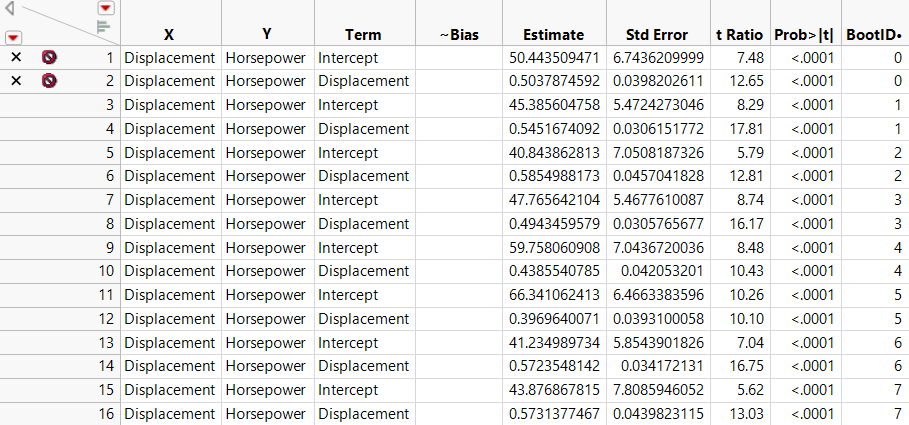 Stacked Bootstrap Results Table
Stacked Bootstrap Results Table
The initial results of a bootstrap analysis appear in a stacked results table (Figure 11.4). This table might not appear if you have selected the Discard Stacked Table if Split Works option. Figure 11.4 shows a bootstrap table that is based on the Parameter Estimates report obtained by fitting a Bivariate model in Fit Y by X to Car Physical Data.jmp. See Overview of Bootstrapping.
Figure 11.4 Stacked Bootstrap Results Table
Note the following about the stacked results table:
• For each bootstrap sample, there is a row for each value given in the first column of the report table. These values are shown in a column whose name is the name of the first column in the report table. In this example, for each bootstrap sample there is a row containing results for each Term: Intercept and Displacement, which appear in the Term column.
• The data table columns that are used in the analysis appear in the table. In this example, X is Displacement, and Y is Horsepower.
• There is a column for every column in the report table that you are bootstrapping. In this example, the columns are ~Bias, Estimate, Std Error, t Ratio, and Prob>|t|. Note that ~Bias is a column in the Fit Y by X report that is hidden unless one of the parameter estimates is biased.
• The BootID• column identifies the bootstrap sample. The rows where BootID• = 0 correspond to the original estimates. Those rows are marked with an X and have the excluded row state. In this example, each bootstrap sample is used to calculate results for two rows: the results for Intercept and the results for Displacement.
• The data table name begins with “Stacked Bootstrap Results”.
If you selected the Split Selected Column option, an unstacked results table might also appear. See Unstacked Bootstrap Results Table.
